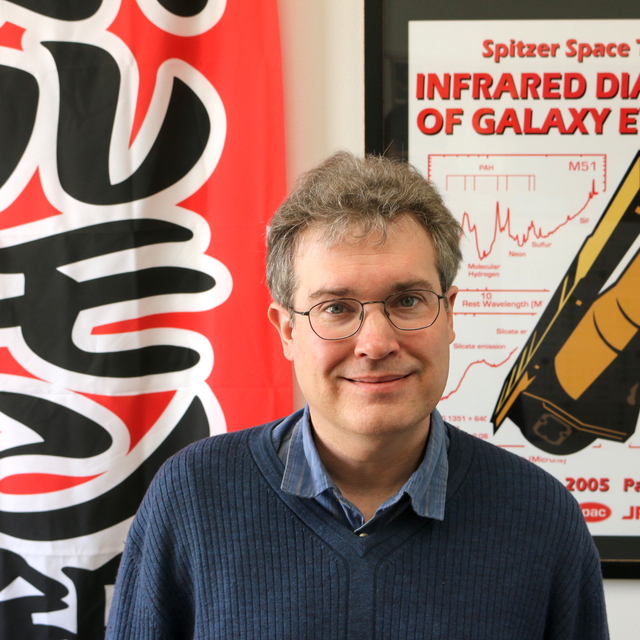April
2024
•
2024A&A...684A.139E
Authors
•
Euclid Collaboration
•
Lesci, G. F.
•
Sereno, M.
•
Radovich, M.
•
Castignani, G.
•
Bisigello, L.
•
Marulli, F.
•
Moscardini, L.
•
Baumont, L.
•
Covone, G.
•
Farrens, S.
•
Giocoli, C.
•
Ingoglia, L.
•
Miranda La Hera, S.
•
Vannier, M.
•
Biviano, A.
•
Maurogordato, S.
•
Aghanim, N.
•
Amara, A.
•
Andreon, S.
•
Auricchio, N.
•
Baldi, M.
•
Bardelli, S.
•
Bender, R.
•
Bodendorf, C.
•
Bonino, D.
•
Branchini, E.
•
Brescia, M.
•
Brinchmann, J.
•
Camera, S.
•
Capobianco, V.
•
Carbone, C.
•
Carretero, J.
•
Casas, S.
•
Castander, F. J.
•
Castellano, M.
•
Cavuoti, S.
•
Cimatti, A.
•
Congedo, G.
•
Conselice, C. J.
•
Conversi, L.
•
Copin, Y.
•
Corcione, L.
•
Courbin, F.
•
Courtois, H. M.
•
Da Silva, A.
•
Degaudenzi, H.
•
Di Giorgio, A. M.
•
Dinis, J.
•
Dubath, F.
•
Duncan, C. A. J.
•
Dupac, X.
•
Dusini, S.
•
Farina, M.
•
Ferriol, S.
•
Fosalba, P.
•
Fotopoulou, S.
•
Frailis, M.
•
Franceschi, E.
•
Franzetti, P.
•
Fumana, M.
•
Galeotta, S.
•
Garilli, B.
•
Gillis, B.
•
Grazian, A.
•
Grupp, F.
•
Haugan, S. V. H.
•
Hook, I.
•
Hormuth, F.
•
Hornstrup, A.
•
Hudelot, P.
•
Jahnke, K.
•
Kümmel, M.
•
Kermiche, S.
•
Kiessling, A.
•
Kilbinger, M.
•
Kubik, B.
•
Kunz, M.
•
Kurki-Suonio, H.
•
Ligori, S.
•
Lilje, P. B.
•
Lindholm, V.
•
Lloro, I.
•
Maiorano, E.
•
Mansutti, O.
•
Marggraf, O.
•
Markovic, K.
•
Martinet, N.
•
Massey, R.
•
Medinaceli, E.
•
Melchior, M.
•
Mellier, Y.
•
Meneghetti, M.
•
Merlin, E.
•
Meylan, G.
•
Moresco, M.
•
Munari, E.
•
Nakajima, R.
•
Niemi, S.-M.
•
Padilla, C.
•
Paltani, S.
•
Pasian, F.
•
Pedersen, K.
•
Pettorino, V.
•
Pires, S.
•
Polenta, G.
•
Poncet, M.
•
Popa, L. A.
•
Pozzetti, L.
•
Raison, F.
•
Rebolo, R.
•
Renzi, A.
•
Rhodes, J.
•
Riccio, G.
•
Romelli, E.
•
Roncarelli, M.
•
Rossetti, E.
•
Saglia, R.
•
Sapone, D.
•
Sartoris, B.
•
Schirmer, M.
•
Schneider, P.
•
Secroun, A.
•
Seidel, G.
•
Serrano, S.
•
Sirignano, C.
•
Sirri, G.
•
Skottfelt, J.
•
Stanco, L.
•
Starck, J.-L.
•
Tallada-Crespí, P.
•
Taylor, A. N.
•
Teplitz, H. I.
•
Tereno, I.
•
Toledo-Moreo, R.
•
Torradeflot, F.
•
Tutusaus, I.
•
Valentijn, E. A.
•
Valenziano, L.
•
Vassallo, T.
•
Veropalumbo, A.
•
Wang, Y.
•
Weller, J.
•
Zacchei, A.
•
Zamorani, G.
•
Zoubian, J.
•
Zucca, E.
•
Bolzonella, M.
•
Bozzo, E.
•
Colodro-Conde, C.
•
Di Ferdinando, D.
•
Graciá-Carpio, J.
•
Marcin, S.
•
Mauri, N.
•
Neissner, C.
•
Nucita, A. A.
•
Sakr, Z.
•
Scottez, V.
•
Tenti, M.
•
Viel, M.
•
Wiesmann, M.
•
Akrami, Y.
•
Anselmi, S.
•
Baccigalupi, C.
•
Ballardini, M.
•
Borgani, S.
•
Borlaff, A. S.
•
Bruton, S.
•
Burigana, C.
•
Cabanac, R.
•
Calabro, A.
•
Cappi, A.
•
Carvalho, C. S.
•
Castro, T.
•
Cañas-Herrera, G.
•
Chambers, K. C.
•
Cooray, A. R.
•
Coupon, J.
•
Cucciati, O.
•
Davini, S.
•
de la Torre, S.
•
De Lucia, G.
•
Desprez, G.
•
Di Domizio, S.
•
Dole, H.
•
Díaz-Sánchez, A.
•
Escartin Vigo, J. A.
•
Escoffier, S.
•
Ferrero, I.
•
Finelli, F.
•
Gabarra, L.
•
Ganga, K.
•
García-Bellido, J.
•
Giacomini, F.
•
Gozaliasl, G.
•
Gwyn, S.
•
Hildebrandt, H.
•
Huertas-Company, M.
•
Jimenez Muñoz, A.
•
Kajava, J. J. E.
•
Kansal, V.
•
Kirkpatrick, C. C.
•
Legrand, L.
•
Loureiro, A.
•
Macias-Perez, J.
•
Magliocchetti, M.
•
Mainetti, G.
•
Maoli, R.
•
Martinelli, M.
•
Martins, C. J. A. P.
•
Matthew, S.
•
Maturi, M.
•
Maurin, L.
•
Metcalf, R. B.
•
Migliaccio, M.
•
Monaco, P.
•
Morgante, G.
•
Nadathur, S.
•
Patrizii, L.
•
Pezzotta, A.
•
Porciani, C.
•
Potter, D.
•
Pöntinen, M.
•
Reimberg, P.
•
Rocci, P.-F.
•
Sánchez, A. G.
•
Schneider, A.
•
Schultheis, M.
•
Sefusatti, E.
•
Simon, P.
•
Spurio Mancini, A.
•
Stanford, S. A.
•
Steinwagner, J.
•
Testera, G.
•
Teyssier, R.
•
Toft, S.
•
Tosi, S.
•
Troja, A.
•
Tucci, M.
•
Valiviita, J.
•
Vergani, D.
Abstract
•
Aims: We derived galaxy colour selections from Euclid and ground-based photometry, aiming to accurately define background galaxy samples in cluster weak-lensing analyses. These selections have been implemented in the Euclid data analysis pipelines for galaxy clusters.
Methods: Given any set of photometric bands, we developed a method for the calibration of optimal galaxy colour selections that maximises the selection completeness, given a threshold on purity. Such colour selections are expressed as a function of the lens redshift.
Results: We calibrated galaxy selections using simulated ground-based griz and EuclidYEJEHE photometry. Both selections produce a purity higher than 97%. The griz selection completeness ranges from 30% to 84% in the lens redshift range zl ∈ [0.2, 0.8]. With the full grizYEJEHE selection, the completeness improves by up to 25 percentage points, and the zl range extends up to zl = 1.5. The calibrated colour selections are stable to changes in the sample limiting magnitudes and redshift, and the selection based on griz bands provides excellent results on real external datasets. Furthermore, the calibrated selections provide stable results using alternative photometric aperture definitions obtained from different ground-based telescopes. The griz selection is also purer at high redshift and more complete at low redshift compared to colour selections found in the literature. We find excellent agreement in terms of purity and completeness between the analysis of an independent, simulated Euclid galaxy catalogue and our calibration sample, except for galaxies at high redshifts, for which we obtain up to 50 percentage points higher completeness. The combination of colour and photo-z selections applied to simulated Euclid data yields up to 95% completeness, while the purity decreases down to 92% at high zl. We show that the calibrated colour selections provide robust results even when observations from a single band are missing from the ground-based data. Finally, we show that colour selections do not disrupt the shear calibration for stage III surveys. The first Euclid data releases will provide further insights into the impact of background selections on the shear calibration.
Links





